The Office for National Statistics has published the latest civil service staff numbers today, to Q2 2014 (June 2014). Petr Bouchal and Gavin Freeguard crunch the numbers.
See our explainer for our more recent analysis of civil service staff numbers.
The total number of civil servants is 408,010, up 2,940 on the previous quarter.
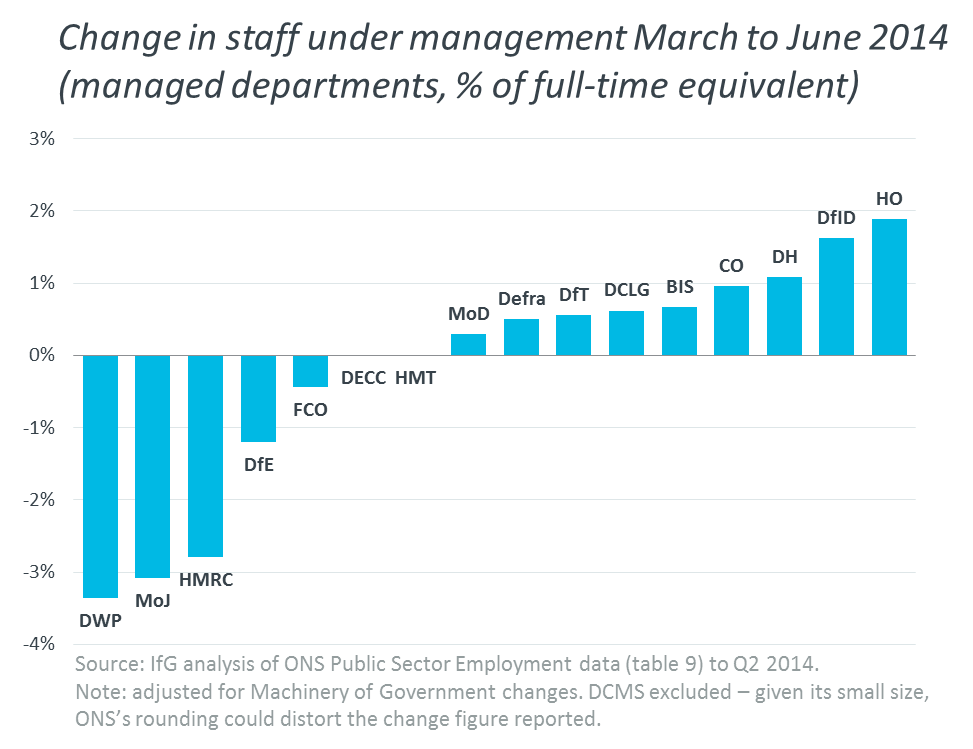
DWP is the largest department with just over 80,000 staff, MoJ now the second largest.
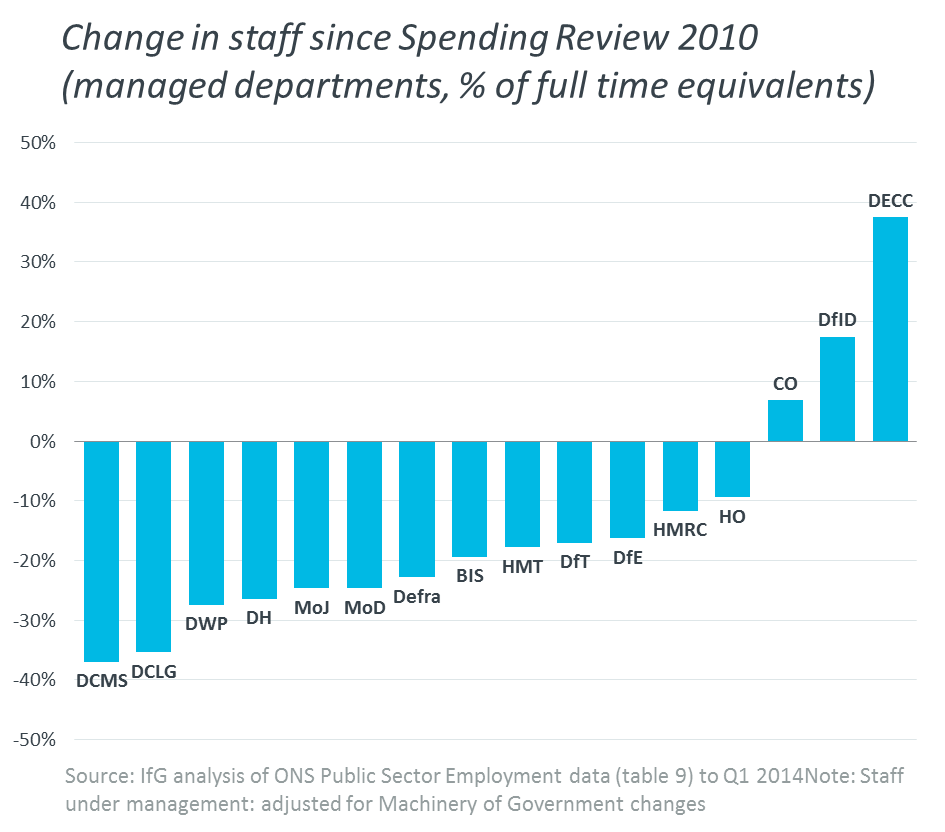
- Managed department – the core department and bodies within the department that are line managed within a structure that flows from the departmental leadership (for example, the National Offender Management Service within MoJ, Education Funding Agency within DfE)
- Other organisations – other Civil Service bodies for which ministers in the department have responsibility, for example, Ofsted in DfE or the DVLA in DfT, but which are not part of the department’s line management structure
- Departmental group – the sum of the managed department and other organisations.
Three of the biggest managed departments – DWP, MoJ and HMRC – cut existing staff numbers by around 3% in the last quarter.
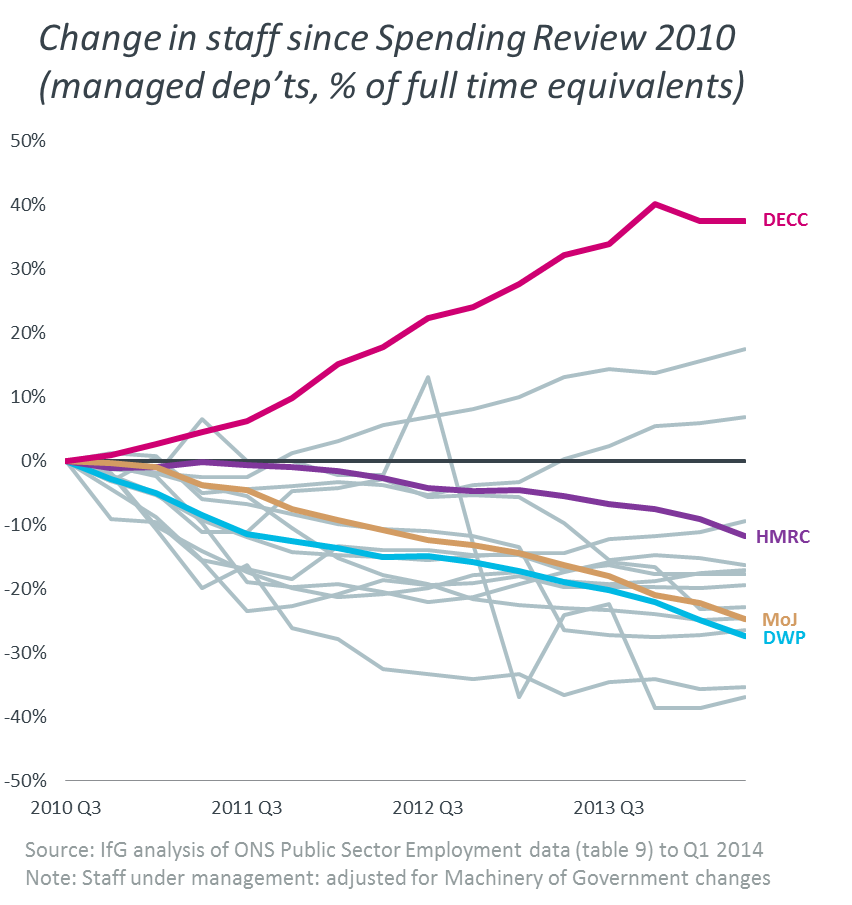
Since the Spending Review, DCMS and DCLG – two of the smallest managed departments – have cut the greatest percentage of staff.
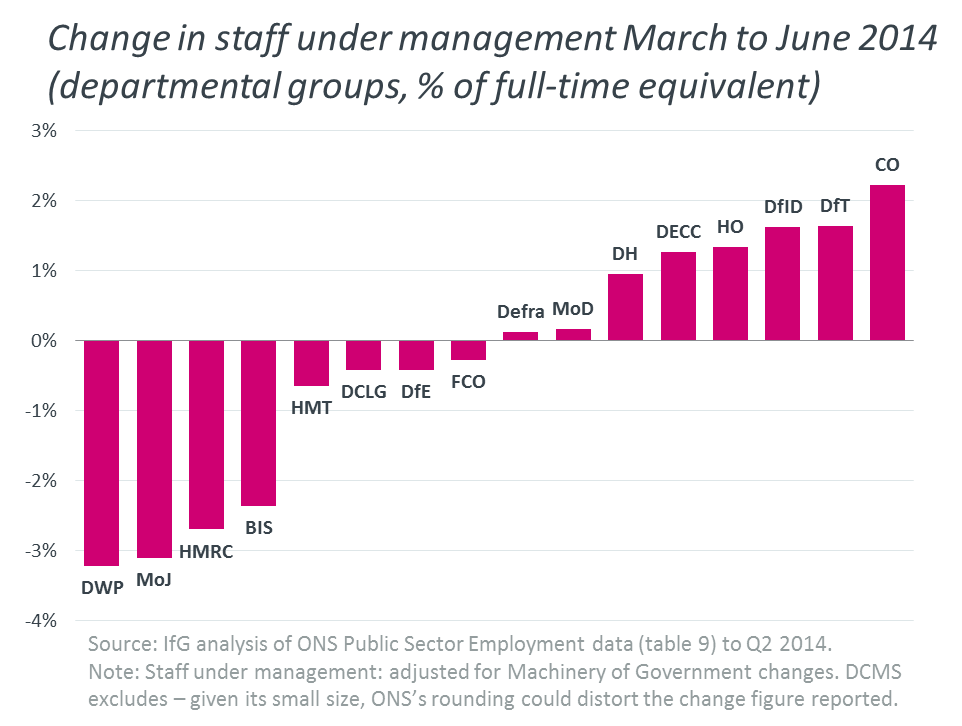
Most departments made significant cuts following the Spending Review, and are now relatively stable.
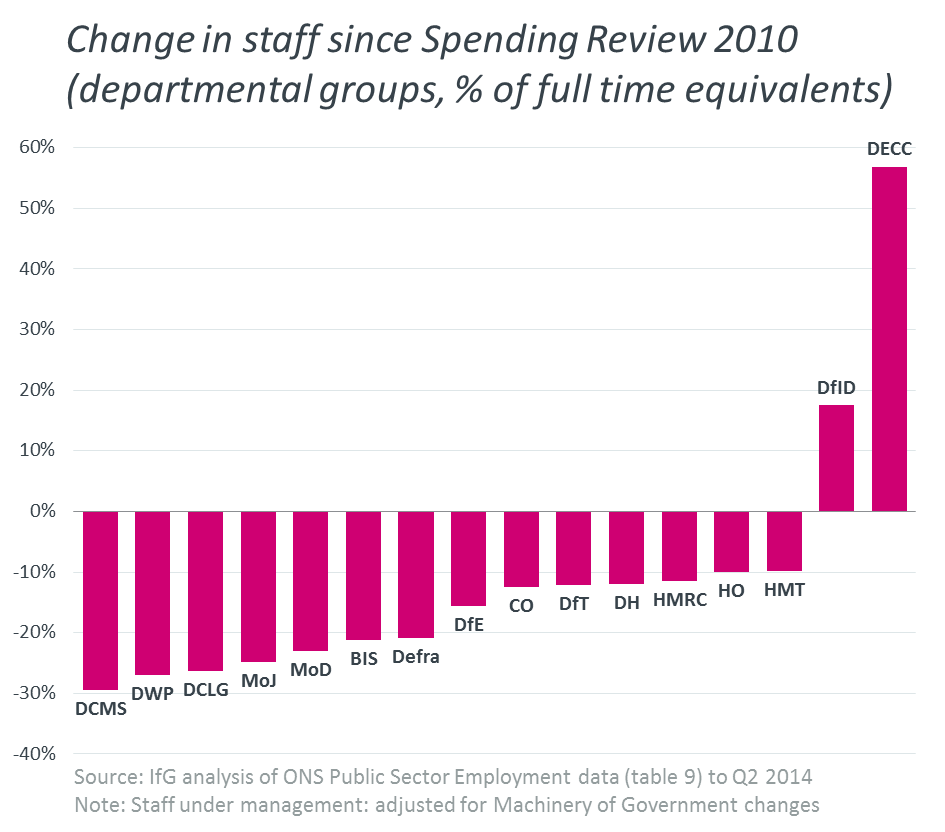
Including sponsored organisations and agencies, Cabinet Office has had the biggest percentage staff increase this quarter.
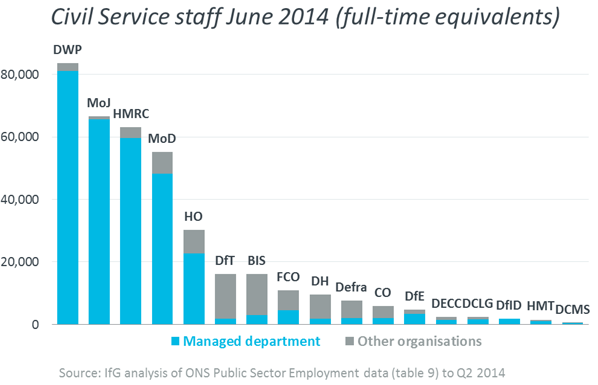
Including organisations and agencies, only DfID and DECC have increased in size since Spending Review 2010.
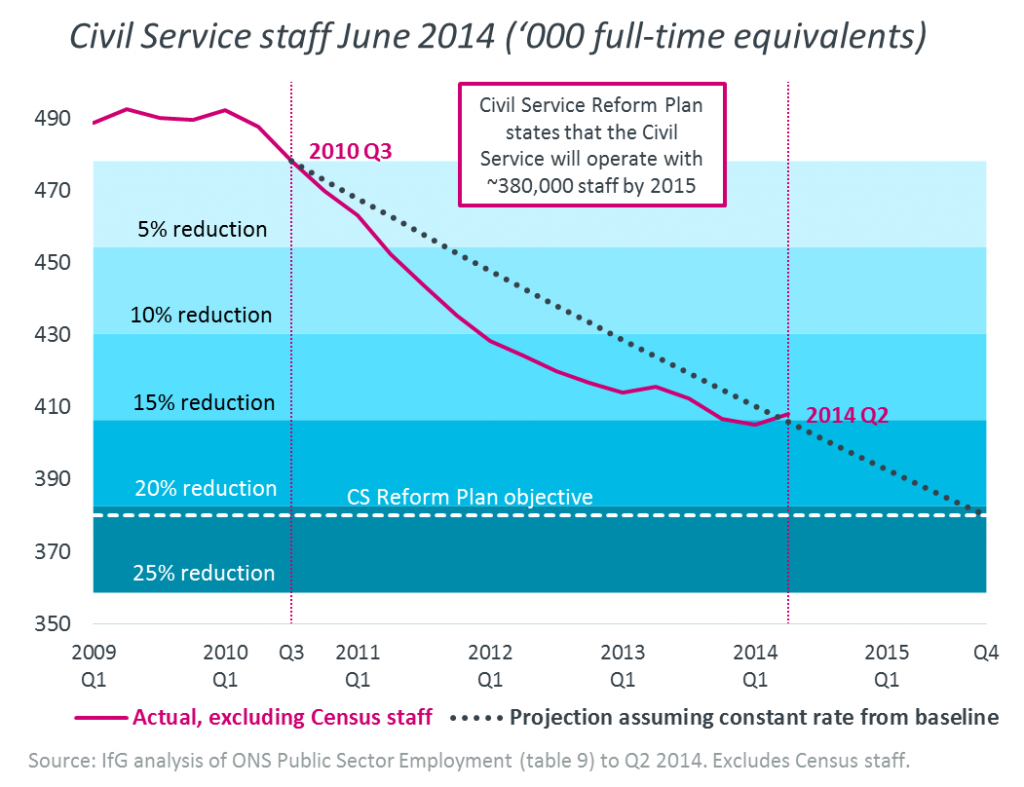
- Topic
- Civil service
- Administration
- Cameron-Clegg coalition government
- Publisher
- Institute for Government